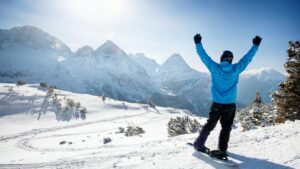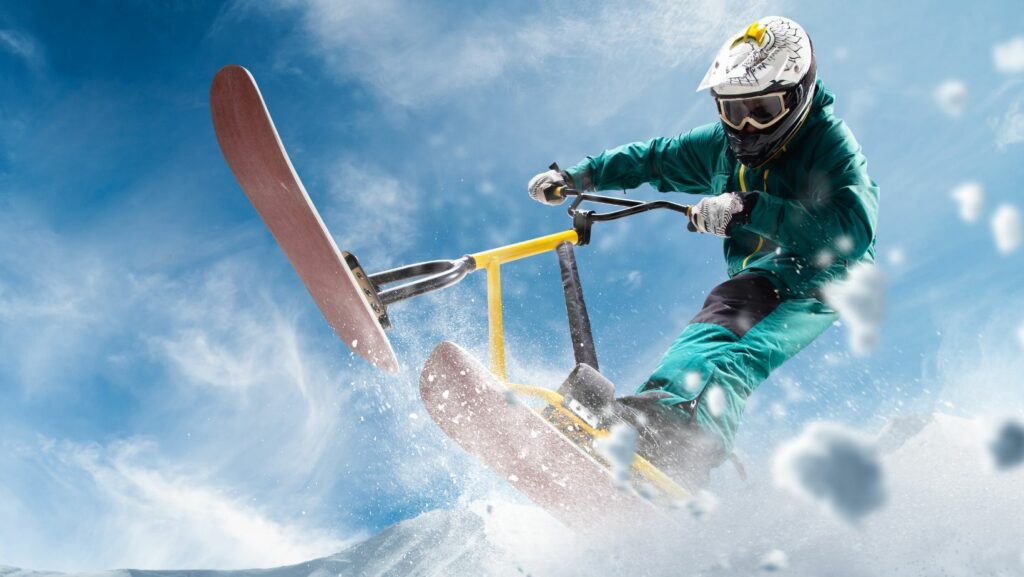As the snow melts away, marking the end of another thrilling winter sports season, it’s time to bid adieu to some of our favorite winter sports equipment. From ski poles to snowboards, these tools of adrenaline-pumping fun have served us well during the frosty season. But as technology advances and new designs emerge, we’re saying goodbye to some classic gear.
This shift isn’t just about aesthetics or performance. It’s a reflection of our evolving understanding of safety, comfort, and the pursuit of pushing boundaries in winter sports. So, let’s take a nostalgic journey back to the equipment that’s retiring and look ahead to what’s coming next in the dynamic world of winter sports.
Ends of Some Winter Sports Equipment NYT
 Innovation propels the winter sports gear industry, dictating an upward trend in tech-savvy equipment. Heavily influenced by advancements in material sciences and digital transformation, manufacturers are increasingly producing gear that holds characteristics such as lightweight, enhanced durability, and better precision. They also fuse advanced technologies offering on-the-spot metrics, enhancing the experience for sports enthusiasts.
Innovation propels the winter sports gear industry, dictating an upward trend in tech-savvy equipment. Heavily influenced by advancements in material sciences and digital transformation, manufacturers are increasingly producing gear that holds characteristics such as lightweight, enhanced durability, and better precision. They also fuse advanced technologies offering on-the-spot metrics, enhancing the experience for sports enthusiasts.
A standout development includes embedded sensors in skiing equipment. For instance, the sensors can track an athlete’s speed, balance, and force exerted while skiing, providing real-time data for performance improvement. Furthermore, advancements such as 3D printed customized gear offer not only a tailored fit but also help in improving an athlete’s performance by reducing drag, hence increasing speed.
Coinciding with the rise in technological equipment, the use of traditional sports gear plummets. Instruments such as classic wooden ski poles and basic snowboards are being sidelined. The preference for traditional gear is dwindling, driven by the continuous quest for superior performance and safety. An example can be seen in snowboarding, where the board evolution from standard wooden to more complex designs featuring enhanced materials, sports aerodynamics, and smart features is reshaping the sport.
Impact of Environmental Changes
 Distant from just technology and innovation, a series of other crucial factors are influencing winter sports equipment’s evolution. Environmental changes, a prominent and urgent force, are now having significant impacts on the design, manufacturing, and use of this gear.
Distant from just technology and innovation, a series of other crucial factors are influencing winter sports equipment’s evolution. Environmental changes, a prominent and urgent force, are now having significant impacts on the design, manufacturing, and use of this gear.
Climatic variations, especially rising global temperatures, alter the condition of natural snow and ice. Snow-based sports like skiing, snowboarding, and ice hockey experience significant fluctuations in both quality and duration of their respective seasons.
For instance, a National Climate Assessment report reveals that the snowfall season was shortened by 34 days between the winters of 1999 and 2010. Natural ice for sports like ice-skating is even more threatened by warming temperatures. With less time for these outdoor winter sports, there’s an overall lessened demand for related equipment.
Moreover, sustainability becomes a critical factor in the manufacturing process. The industry faces the challenge of reducing its carbon footprint while meeting customer demand for quality and efficiency. These changes, as it’s apparent, are driving the alteration of traditional equipment design.
Adaptation in Equipment Design
In response to environmental concerns, many winter sports equipment manufacturers are re-thinking their design philosophy. Their central obligation is to create products that minimize environmental impact, without compromising performance.
One instance of this adaptation process is the increasing shift towards using recyclable materials. With carbon fiber and other composites classified as non-recyclable, manufacturers like ELAN Skis are now moving towards the use of bamboo, a renewable and recyclable resource in their products.
Economic Factors Contributing to Equipment Changes
 Rapid changes in consumer demand significantly impact winter sports equipment’s evolution. Driven by increased environmental awareness, many individuals now opt for sustainably-produced sports gear, amplifying the demand for eco-friendly materials in production. They’re choosing gear made from recycled plastics or sustainable bamboo, such as skis, snowboards, and clothing. Additionally, consumers prefer products that offer both performance and cost-effectiveness. For instance, skis and snowboards using composite materials offer durability and high performance at a considerably lower price than traditional materials.
Rapid changes in consumer demand significantly impact winter sports equipment’s evolution. Driven by increased environmental awareness, many individuals now opt for sustainably-produced sports gear, amplifying the demand for eco-friendly materials in production. They’re choosing gear made from recycled plastics or sustainable bamboo, such as skis, snowboards, and clothing. Additionally, consumers prefer products that offer both performance and cost-effectiveness. For instance, skis and snowboards using composite materials offer durability and high performance at a considerably lower price than traditional materials.
Moreover, the desire for upgraded features, such as smart technology integration in skiing equipment – embedded sensors tracking speed and performance – has ignited change in production processes. These advancements often attract higher costs, but customers willingly pay for them, appreciating the enhanced experience. Thus, spending patterns influenced by maintenance requirements and technological advancements contribute to the evolution of winter sports gear.
